Roundtable Discussion by Young CMSI Researchers 「Furthering the Development of Computational Materials Science」

Todo (moderator) : Today we have brought together four young researchers who are currently active in various fields of computational materials science. We'd like to ask them to speak frankly about the state of computer training, the state of software development and release in their respective fields, and about the issues that need to be resolved in these areas, as well as their expectations with regard to CMSI.
Could you begin by telling us a little about yourselves?
Udagawa : I graduated from the Graduate School of Science at the University of Tokyo with a major in physics. My specialty is model calculations for strongly-correlated electron systems. The fundamental area of inquiry in this field is the search for novel cooperative phenomena and order phenomena. In materials that have strong geometric frustrations, electrons sometimes act as if they have several
hundred times the mass of free electrons, and I'm very interested in the mechanism that causes this phenomenon. In terms of hardware,
I use the supercomputer at the Institute for Solid State Physics.
Ohba : I graduated from the School of Science at Nagoya University with a major in physics. I am currently employed at the Toyota Central
R&D Labs, Inc. This is the research lab that conducts basic research for the Toyota Group. My work involves device simulations and first
principle calculations for ferroelectric and hydrogen storage materials. Currently I'm working to develop simulation methods for lithium ion batteries. I'm also a third year student in the Ph.D program at Nagoya Institute of Technology.
Sato : I'm currently studying in the Graduate School of Engineering Research at Hokkaido University with a major in materials science.
My research topic is atomic diffusion in alloys. When heated, iron and aluminum atoms begin to move of their own accord and mingle with
one another, and I'm attempting to calculate the way in which they will move and mingle with one another. I often use the Monte Carlo method. In terms of computers, I mainly use PC clusters, but I'd like to use a large computer as well.
Ishimura : After graduating from the Graduate School of Kyoto University with a major in synthetic biochemistry, I worked at the Institute for Molecular Science and the Toyota Central R&D Labs, Inc., and now I'm a assistant professor at Kobe University. My work involves quantum chemistry calculations. This involves calculating the electron state of molecules and developing algorithms and programs for accelerating and parallelizing simulations. I'm particularly interested in working with nanosize molecules, which has not been possible until now. At the Toyota R&D Labs, I developed and demonstrated a program to perform 2000-core quantum chemistry calculations.
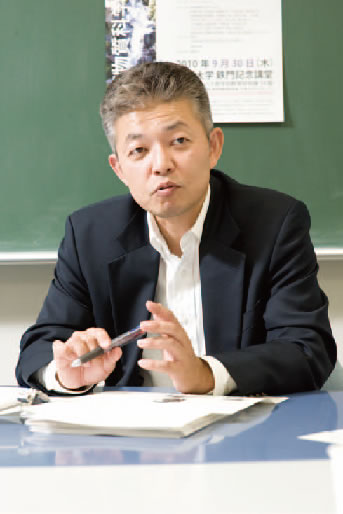 | 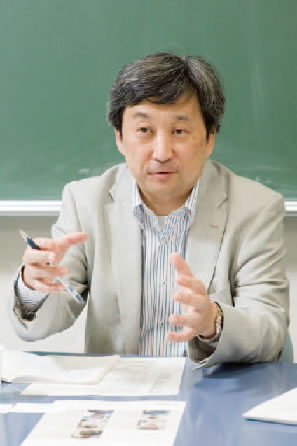 | 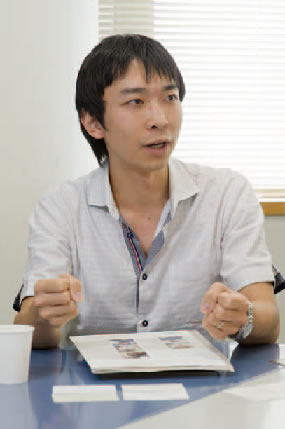 |
|---|---|---|
| Synge Todo CMSI Publicity Committee Chair Lecturer,Department of Applied Physics, Graduate School of Engineering. The University of Tokyo |
Shinji Tsuneyuki CMSI Representative Director Professor.Institute for Solid State Physics/ Graduate School of Science. The University of Toyo |
Masafumi Udagawa Research Associate, Department of Applied Physics, Graduate School of Engineering, The University of Tokyo |
Handmade Software / Self-Taught in Programming
Todo : What kind of software do you use?
Udagawa : In terms of simulation software, I generally write the software myself.
Sato : I also write my own software, but some people use commercial MD packages.
Tsuneyuki : At universities, having students write software is part of their education. But how about at companies? If commercial software is available, do you use it right away?
Ohba : Mainly we use programs that we've developed in-house. With regard to using commercial software, it depends on the price. If we do use it, we add things ourselves to expand the software.
Todo : At companies, do you provide full instruction in programming?
Ohba : We don't provide any instruction at all. Research teams use the standard software that's in use, or programs that more experienced members of the team have created. Everyone's self-taught. For that reason, each department sometimes uses different programs.
Todo : I get the feeling that recently a lot of the students haven't learned the languages that can be used for simulation when they first join the laboratory.
Ishimura : At Kyoto University there are classes in Fortran, so students can program in Fortran when they are assigned to the laboratory. At Kobe University, the department uses C, and students entering the laboratory have to study Fortran. In the class of parallelization and optimization, source code is provided in both C and Fortran, and students write their own programs.
udagawa : In the field of condensed matter physics, too, there's a mix of both C and Fortran. In my lab, my boss and I use different languages.
Sato : Fortran is used for computer practice in the department. In the lab it's all over the place: the professor uses Fortran, the research associate uses C, and I use C, too. Students learn programming through one-on-one instruction from a teacher.
Todo : So I guess when you enter graduate school, the language you use is determined by who teaches you.
Tsuneyuki : Did you get any instruction in computational theory?
Ohba : No. I learned it through private workshops and so on. When I first joined the company, I was in the same laboratory as the fluids team, and there were people studying diagonalization theory. So I just picked it up.
Todo : I had thought it would be taught a little more systematically. I guess I was wrong. (Laugh)
Tsuneyuki : How did you study parallelization?
Ishimura : I'm self-taught. We have started a class this year, but it's at the beginner level, not the supercomputer level. In other words, that's for master's students to be able to write a program for PC clusters.
Todo : In my case, I learned parallelization by attending workshops at the Supercomputer Center of the Institute for Solid State Physics. At the time, the only parallel computers were supercomputers. Have you ever attended that kind of workshop?
All : I know such workshops exist, but I've never attended one.
Todo : So that means all of you are completely self-taught?
All : Yes. (Laugh)
Sato : Learning by yourself is convenient since you can begin studying immediately when it becomes necessary.
Ohba : I studied by myself by asking people around me and people who really knew what they were doing. I also did research on the Web and modified the programs by myself as needed.
Todo : When I'm having graduate students do parallel computing, I wonder if it would be better to tell them to do research on the Web and then begin programming. It would be convenient if there were a collection of resources online.
Ishimura : There are still only young people in the lab, but we're planning to create a system in which the senior students teach the junior students.
Tsuneyuki : Are there any moves to create a university-wide curriculum?
Ishimura : I think instruction is beginning little by little and it will gradually take shape. Our department specializes in computational science, but the faculty members majored in a variety of areas like math, physics, chemistry and biology. The common thread is that they all use computers. From the standpoint of a physics or chemistry major, parallelization is ultimately just a means to an end. It's not the end itself.
Todo : They feel that if they go too deeply into it, they won't be able to get back to their original area of specialization?
Ishimura : Yes, you could say that about me, too. (Laugh)
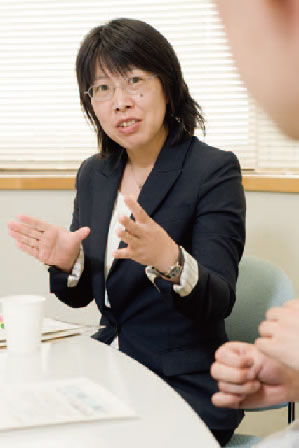 | 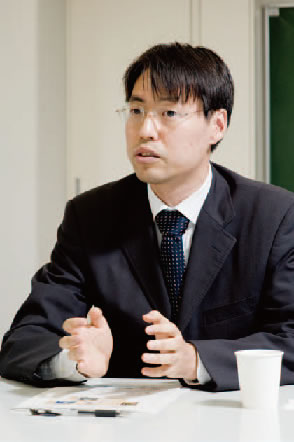 | 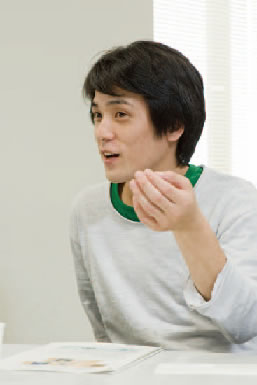 |
|---|---|---|
| Nobuko Ohba Researcher, Materials Design Lab. Materials Fundamentals Research Div., toyota Central R&D Labs.,Inc. |
Kazuya Ishimura Assistant Professor, Department of Computational Science Graduate School of System Informatics, Kobe University |
Kazufumi Sato 3ed-year Ph.D candidate, Laboratory of Materials Modeling, Division of Materials Science and Engineering, Graduate School of Engineering Research, Hokkaido University |
Can Software Development Enhance Your Reputation?
Tsuneyuki : Work such as parallelization is hard to turn into an academic paper. How can you make it enhance your reputation? I think that's something that absolutely must be done in order to ensure progress in computational science. Do you have any ideas as to how to accomplish this?
Ishimura : Personally, I think it must have enhanced my reputation, since I got hired as a research associate.
Todo : In other words, academic posts need to be increased.
Ishimura : The professors need to do their part. (Laugh)
Tsuneyuki : People who have strong computer skills are needed in condensed matter physics, too, so I'd love to hire then. But I know that at
the faculty meeting the minute I say an applicant's previous achievements were in software parallelization, the result will be that he or she won't get hired.
Ishimura : I think we also have to do our best to release programs that boost our name recognition.
Todo : Do you all release the programs that you develop to the public?
Ishimura : At the Institute for Molecular Science, I expanded a program called GAMESS, and a portion of that program was
released. I played a leading role in the development effort, but subsequently we worked together to debug it and do various other types of work on it.
Tsuneyuki : What was the reaction?
Ohba : In the case of Gaussian, the paper will be cited with the name of developers.
Ishimura : That wasn't so in the case of GAMESS. You only got your name included in the list of developers at the end of the program. It's not like I got hired just because I developed the program.
Todo : I'm working on the project for a program called ALPS. There we write a paper with about 20 authors like elementary particle physics. And by the license people who want to use the program to write papers are obliged to cite our paper.
Ishimura : If we can show through this Initiative that there's a way to increase your name recognition by releasing software, I think
the number of young people who decide to try it will increase.
Sato : In companies, does program development enhance your reputation?
Ohba : If the purpose of your work is creating software, then I think you'll get credit for it. But I think it would be difficult if that weren't the case. Executives would ask, "So you created software. What now? Are you going to sell it?"
Todo : I think one of the advantages of open source software is that you can release it, even in imperfect form, and then many people will lend their knowledge and help improve it. Mr. Sato, do you release software?
Sato : No. I create software for my own use, and it's enough if I understand it. So I don't write programs carefully with the intention of ensuring that they can be used by as many people as possible. Also, our community isn't that large, so I don't think there are that many users.
Todo : People from other countries are pretty up-front about asking you to give them your programs. When that happens, I worry about what might happen to a program I designed all by myself after I hand it over. Conversely, when you release software publicly, you can set conditions: I'm making the software available under these conditions and I expect you to observe those conditions when you use it.
Ishimura : These days I think even people who conduct experiments perform a lot of calculations. But I doubt that they're users of the kind of programs that will be developed under this Initiative. This will change if someday there are people in the field of experimentation who need a supercomputer because the PC clusters in the laboratory are insufficient.
Tsuneyuki : Pr ograms like Gaussian and GAMESS have a lot of functions, so I wonder if it will be OK even without a supercomputer. As long as you're going to release the program, there's no sense in releasing one that has the exact same functions. It has to have functions that no existing software has.
Ishimura : One example would be switch to massively parallel computing. It would be hard to make an effective approach with existing software. I wonder if you could do it through parallelization and increasing the speed.
Udagawa : Occasionally I'm in communication with people in the field of nuclear physics, and they tell me they sometimes find programs with algorithms for analyzing the structure of atomic nuclei useful. However, different languages are used in different fields, so something needs to be done about that as well.
Tsuneyuki : In your fields, are there any examples of software being released overseas?
Ishimura : There are many examples of that in Europe and the United States. I imagine it's because program development and release is taken into consideration when conducting evaluations.
Tsuneyuki : Japan is behind other countries when it comes to software development. So I hope this project provides the opportunity to release software. Japanese developers have released lots of freeware games. I wonder where they come up with those ideas.
Sato : Surely they do it to see the reaction to their work.
Todo : I wonder if the reaction is enough of an incentive for software release.
Ishimura : I doubt that I'd have the time to do that while doing my post-doctoral research. I might be able to if I could see many career paths other than that of researcher, but I doubt that all of us will be able to get an academic position.
Ohba : I think these days companies have extremely high expectations when it comes to computer simulations.
Todo : Still, it's not like there's a market for people who have used computers in their work. People search for them in their area of specialty. What I'd like to see is for the Initiative to publicize to companies that are looking for computation personnel the fact that there are certain people with those skills. I hope that kind of process becomes established.
How Can We Train People to Use Next-Generation Supercomputers?
Ishimura : At the Institute for Molecular Science, I worked on a supercomputer with several hundred cores, and at the Toyota Central R&D Labs I worked on one with 2,000 cores. But each time the number of cores increases by one decimal place, it takes two years until you're able to master it. From PC clusters to the several thousand core level, and then from there to existing supercomputers, and from there to next-generation supercomputers. Even if you teach students to go from zero to PC clusters in class, how to train students who are able to master computers from that point on is a major issue.
Tsuneyuki : Up until recently, the environment didn't exist in which you could conduct parallel computing with more than 10,000 cores. At that level, even a computer science specialist would find it tough going.
Todo : In my own experience, people can study on their own and master something on the order of 1,000 cores. But beyond that, currently support from a computer vender is absolutely necessary to optimize a program.
Tsuneyuki : Another objective of CMSI is to build a support system for parallelization. We could invite a parallelization specialist from a private company to come. Or if there was someone specializing in computer science who was also interested in applied computing, we could recruit that person.
U d a g a w a : If someone is interested in performing calculations with 10,000 cores, is it easy for that person to get training?Tsuneyuki : There's a forum for discussion of what problems should be computed on the next-generation computer (popularly known as “K Computer”). The forum will decide the priority between the problems. I think it would be great if there were a mechanism by which, if young people have an idea for something they want the computer to solve, they could apply and we could say, "That's a great idea! Why don't you do it?" In the near future, we're planning to have a workshop for finalizing the report of the year's achievements and the schedule for the next fiscal year. So you could make proposals at that workshop.
Ishimura : Undoubtedly there are people who would like to have the opportunity to get vendor support for training in 1,000 or 10,000 core computing. It would also be good for there to be a forum where people could speak more freely than at an academic conference. Where they could ask questions freely and where they could talk about failures as well as successes. Experience is essential for parallelization, so I think sharing and accumulating experiences would be very helpful.
Tsuneyuki : But even if we got a vendor to optimize the program of a specific group, the knowledge would not be communicated outside
that group. I wonder if there's a way to raise the level of the field as a whole.
Ishimura : I think we should discuss with one another at informal workshops and get vendors to share their experiences as well, so that everyone's level would be improved.
Sato : It may be essential for achievements derived through computation to be released. There's still little acknowledgement of
computation. When you say you do computations, you get a surprised reaction from people. I'd like people to have a clearer understanding of the fact that computation can make a major contribution in many research fields.
Ohba : Companies have a need for computation in many areas. For that reason, I think that when they access the Initiative's website, they should be able to find out how to perform computations and find seeds about joint research projects. It would be good if the website could provide that kind of information
Tsuneyuki : I hope we can put out a newsletter that's something like a "research cafeteria." There would be lots of things on the shelves
and people could come and pick up the things they found interesting. Something like that.
Ohba : That would be great ̶ a resource that would make people think, “It sounds like I could find some interesting seeds there.” Or “I had heard that the professor was trying to do that; I wonder how it went after that.” “If he's managed to make a go of it, I'd like to use it.” I hope it becomes a source of information that can fulfill those kinds of demands.
Tsuneyuki : I think whether or not Japan is able to develop the next generation of K Computer will depend on whether achievements are produced by CMSI. We also need to begin the discussion about the type of next-generation supercomputer that should be built once we've mastered K Computer.
Todo : The first sections of K Computer were shipped today. We'll have to do our best to keep moving forward as well.
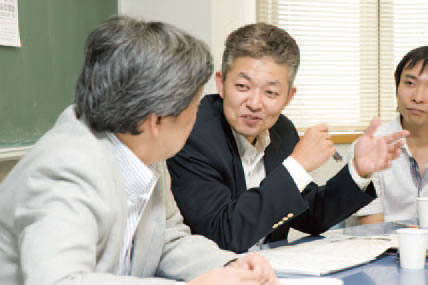
(Recorded September 29, 2010)



